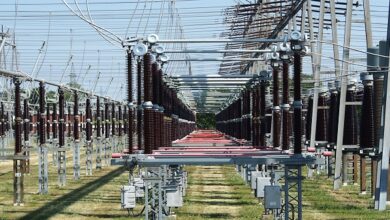Thinking in Terms of Space

The matrix-like spatial environments that digital media allow contrast dramatically with the fairly predictable paths of readership for print media. Think about the words we use to describe information and how to get to it online, words such as hypertext, hyperlinks, and cyberspace. These are spatial terms that connote movement. On the web, we visit a site and navigate in and through it. To get where we want to go, we Google or key in an address, a Universal Resource Locator (URL).
These are ideas and terms that do not apply to flat, two-dimensional printed pages. With smartphones, the shift is just as fundamental, such that these mobile devices have become nearly a part of us. When a person receives a text, tweet, “like,” or news blast, his or her leg or butt actually vibrates—a physical sensation to a digital “event.” In terms of humanto-media relationships, this is unprecedented. The news has never been so intimate. Digital natives often sleep with their phones mere inches from their heads, afraid as they are to miss even one text or phone call.
Thus, we should consider ourselves architects of spaces and places, as authors and guides for interactors navigating through these networked, socially mediated spaces. The luxury, or perhaps simplicity, of working with linear, sequential documents is a thing of the printed past. In meaningfully engineering these networked spaces and editing within them, we are asked to anticipate the needs and wants of interactors and the many paths they may want to pursue. This places a premium on providing consistent, clear navigation throughout their journey, navigation that minimizes if not eliminates disorientation.
It also rewards those who create “experiences.” Millennials, in contrast to their parents, aren’t interested in accumulating “stuff”—material goods—as much as they are seeking experiences and the digital esteem those experiences elicit in their social networks.
To dramatize the challenge that spatial orientation requires, imagine having a job interview in Chicago, somewhere, say, in the John Hancock Center downtown. Your cab deposits you at the massive building’s front doors. After walking into the spacious lobby, you wonder how to find your way to the interview. You ask the security detail at the front desk, or you consult a posted directory. With the floor and office designation now in hand, you head for the bank of elevators.
For the web and for mobile, this means that each page, even each article or content block, must stand on its own as a self-contained entity or island that does not require readers to navigate to it by following any sort of prescribed path. At the same time, good navigation communicates that in fact the page is just one part of a networked world of similar or related content, a world that facilitates and even encourages teleporting to lots of other interesting spaces and places.
One of the downsides of these shifts is that articles compete against each other almost irrespective of their source or origin or brand, allowing derivative, recycled content and even the utterly false and fictional to compete against traditionally trusted news sources on an article-by-article basis. The result, not surprisingly, has been a sort of informational chaos or circus, one in which the metaphorically “shiny” content gets the immediate, albeit evanescent attention.
Last word
Loading fast; providing a clean, easy-to-scan interface; and making every pixel count are the demands on app designers. And gone as a reliable or useful metric is how much time an interactor spends per visit, page view, or session.




